Control Exercise
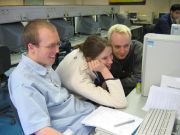
As a part of the Web Based Teaching Project we were running a control exercise during Lent term 2004.
To explore the theory of PID control in practice the students connected to an experimental setup based at the MIT via the Internet. The students could hereby gain access to real equipment generating real data in real time. The interface used for operating the experiment is widely used in the industry and the students are likely to meet it again in their professional life.
Below you find a few photographs taken during the exercise. A more detailed description of the exercise can be found here.
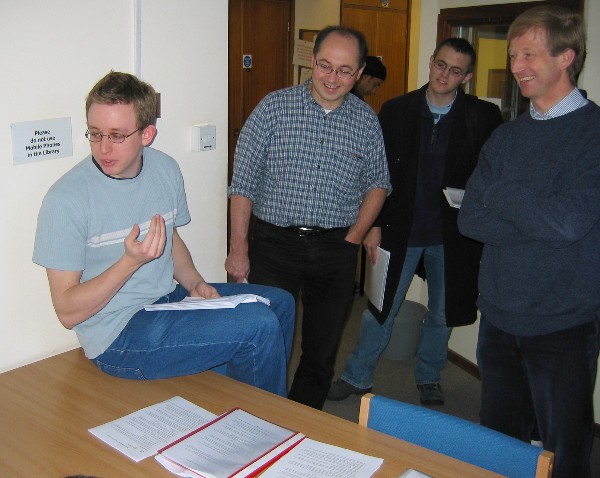 |
Teaching Consortium Teaching Fellow Mike Goodson explains the exercise end ecourages everyone to get started right away, calculate and get the parameters checked and sign up for timeslots.
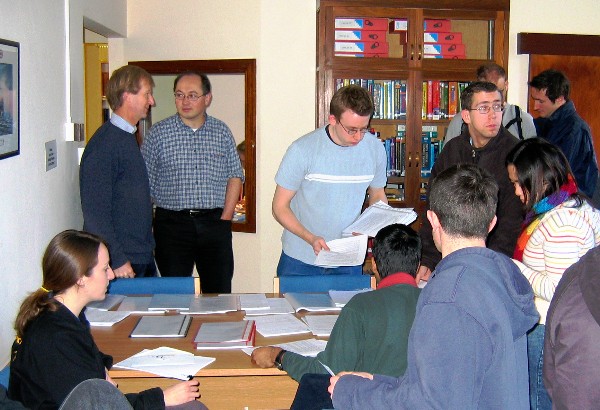 |
Teaching Consortium Teaching Fellow Mike Goodson hands out the exercise to expectant students.
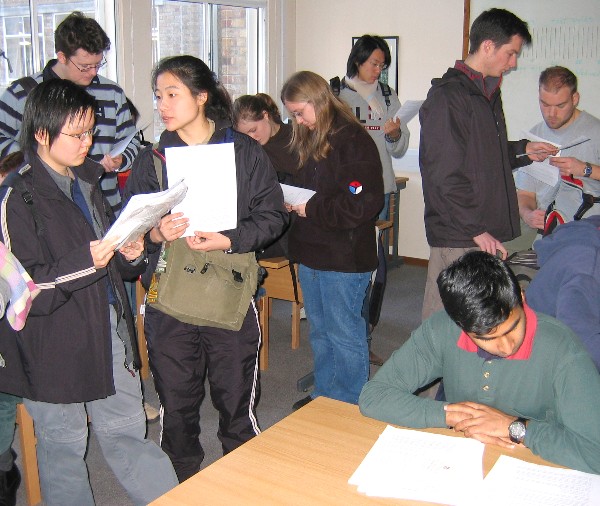 |
Now, what is this?
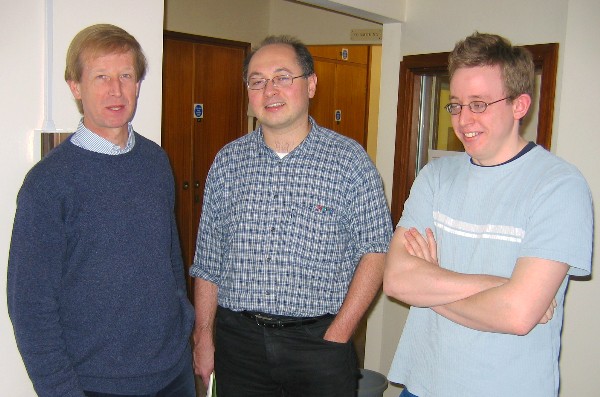 |
John Dennis (responsible for the Control Exercises), Markus Kraft (responsible for Web Based Experiments) and Teaching Consortium Teaching Fellow Mike Goodson (demonstrator).
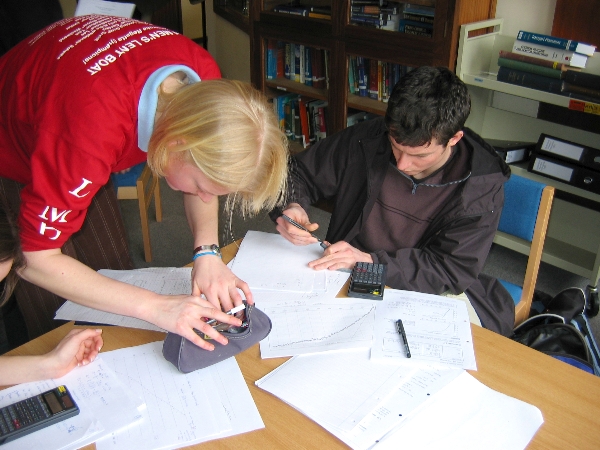 |
A lot of students came to the first seminar to calculate PID parameters based on the Cohen-Coon open loop formulas. After presenting decent parameters and being able to correctly identify the controlled variable, the process variable and any distubance variables each student got their password to be able to log in, sign up for a time slot and perform the experiment.
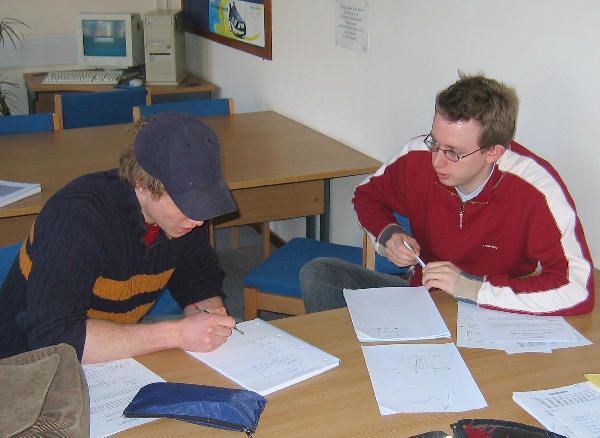 |
Teaching Consortium Teaching Fellow Mike Goodson explains how to get the control parameters out of the open loop test data.
 |
The units tended to mix things up for some. Kelvins, Kilowatts, seconds and percent... Teaching Consortium Teaching Fellow Mike Goodson explains how to sort everything out.
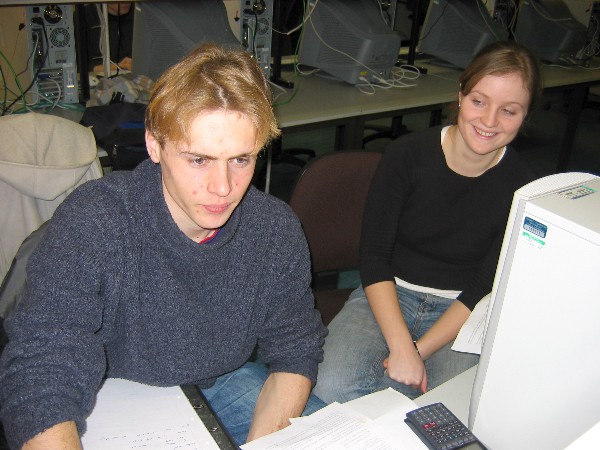 |
Performing experiments over the internet is new and quite different from the hands on experiences the students have had in previous courses. James concentrates...
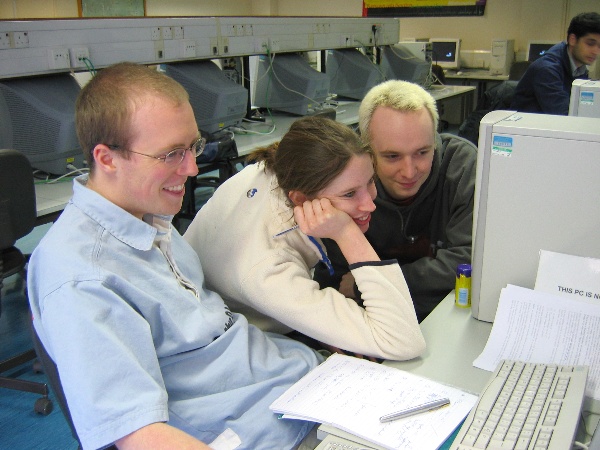 |
Will it go up? Will it go down? Will the oscillations die out? Looking at the curves on the screen.
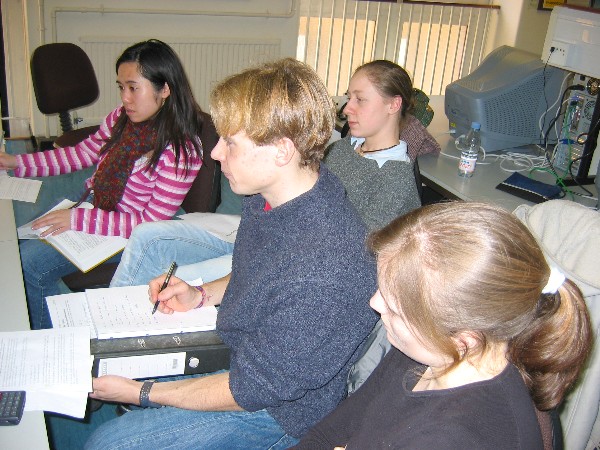 |
Some fine tuning later the behaviour was much improved. Real life is often more complex than the idealised situations presented in lectures.
 |
The students much appreciated the opportunity to play with the control parameters and follow what happened with the system.
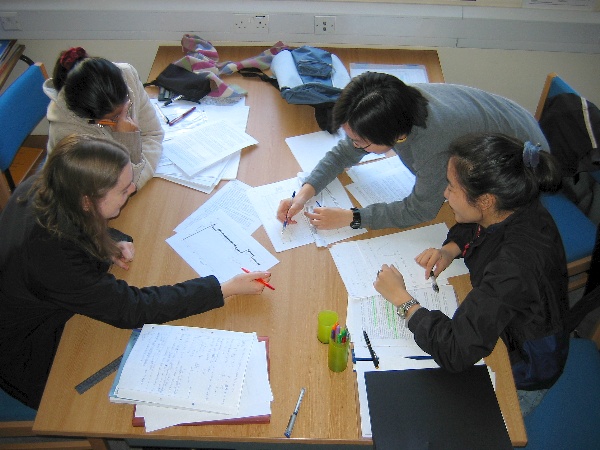 |
After the experimental session the data was evaluated. Which error response criterion to choose?
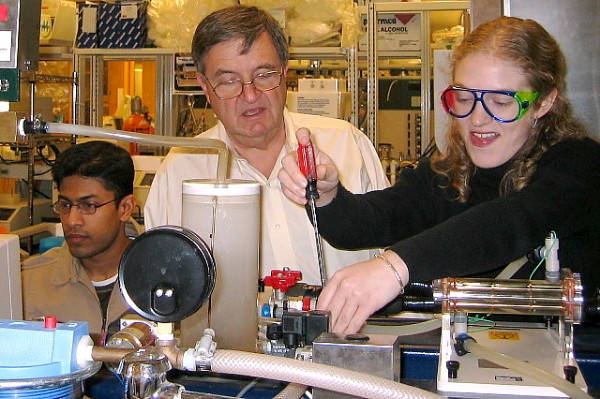 |
The iLab Heat Exchanger Team, Sid Sen (research assistant), Prof Clark Colton and Faye McNeil (teaching assistant), working on the heat exchanger and software in preparation for the first transmission to University of Cambridge, UK.
After the equipment and procedures were all set up, the iLab could be run with very little effort from the other side of the Atlantic. Scenes of what the team members were doing while the experiments were running remotely:
 |
Prof Clark Colton lecturing in class.
 |
Faye working elsewhere on her PhD thesis laboratory research.
 |
Sid in a student lounge before class with a laptop on the MIT wireless network checking on the administration panel to verify all is satisfactory.
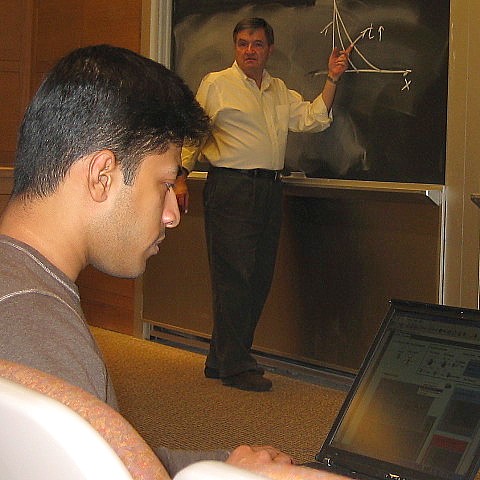 |
Sid checking experiment while in class (Prof Colton lecturing in the background).



